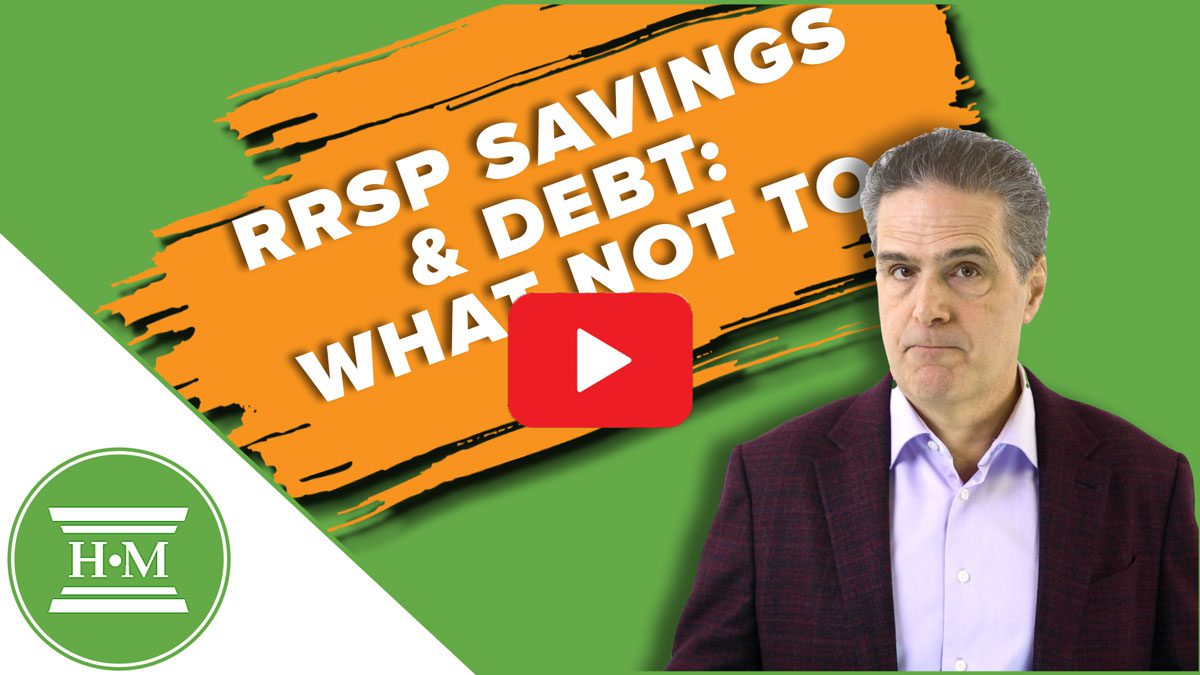
When facing overwhelming debt payments, mounting pressure from debt collectors, or struggling with high-interest credit cards and loans, many Canadians consider using their RRSP savings to pay down debt. While using retirement savings to clear debt might seem like a straightforward solution, it’s crucial to understand both the immediate and long-term implications of this decision.
Hidden Costs of Using Your RRSP for Debt Repayment

While you can use your RRSP to pay down debt, it’s often an expensive solution that could leave you worse off financially due to withdrawal costs. Here are the consequences you need to understand:
You’ll Lose Money to Withholding Taxes
The government requires banks to hold back a portion of your RRSP withdrawal:
- 10% on amounts up to $5,000
- 20% on amounts between $5,001 and $15,000
- 30% on amounts over $15,000
This means you’ll get much less than you expect. For instance, if you withdraw $10,000, you’ll only receive $8,000 in hand.
You’ll Face a Bigger Tax Bill Next Year
Your withdrawal gets added to your annual taxable income. If you’re working, this could push you into a higher tax bracket. Depending on your tax rate, you might end up owing an additional 20-30% in taxes when you file your tax return, on top of what was already withheld.
You’ll Have Less Money for Retirement
Taking money out of your RRSP means losing years of interest income and tax-free investment growth. A $10,000 withdrawal today could cost you $30,000 or more in retirement savings, depending on your investment returns and years until retirement.
You Can’t Put the Money Back Later
When you withdraw from your RRSP, you permanently lose that RRSP contribution room. Unlike a Tax-Free Savings Account, you won’t be able to replace these funds in the future, limiting your ability to rebuild your retirement savings.
You May Not Even Need to Use Your RRSP
Your RRSP is protected in a bankruptcy. In a consumer proposal, you keep all assets, including retirement savings. If you cash out your RRSP and then need debt relief later, you’ll have lost this protection unnecessarily. Many people drain their RRSPs only to find out they could have kept their retirement savings intact while still dealing with their debt.
Better Ways to Deal With Your Debt
Instead of immediately using your RRSP, consider these alternate solutions:
You Could Use Other Savings
If you have savings in a Tax-Free Savings Account (TFSA) or regular savings account, consider using these funds before touching your RRSP. TFSA withdrawals don’t trigger any tax penalties, and the contribution room is restored the following year, so you can rebuild your TFSA when your finances improve. This makes them a much better option than using your RRSP.
You Could Consolidate Your Debts
By combining multiple debts into a single loan with a lower interest rate, you can reduce your monthly payments and pay less interest overall. This might be through a debt consolidation loan, a low-interest balance transfer credit card, or, if you own a home, a home equity line of credit.
Consider Bankruptcy or a Consumer Proposal First
Both consumer proposals and bankruptcy offer legal protection for your RRSP. A consumer proposal can reduce your debt by up to 80% while letting you keep all your assets. If you’re facing overwhelming debt, bankruptcy eliminates most unsecured debts, including credit card debt, payday loans and even tax debts. Both options stop collection calls immediately and give you a clear path to becoming debt-free while protecting your retirement savings.
If your debts feel overwhelming and you’re considering using your RRSP as a last resort, speak with a Licensed Insolvency Trustee first. They can show you how to keep your retirement savings intact while still dealing with your debt. The consultation is free, and you’ll get expert advice about immediate steps you can take to stop collection calls and protect your financial future.





